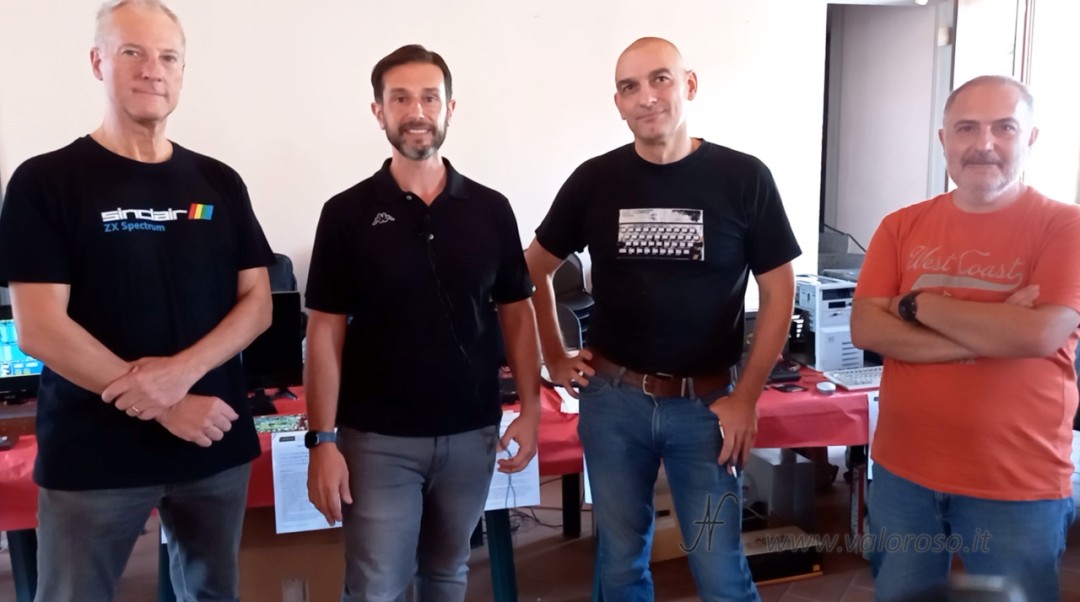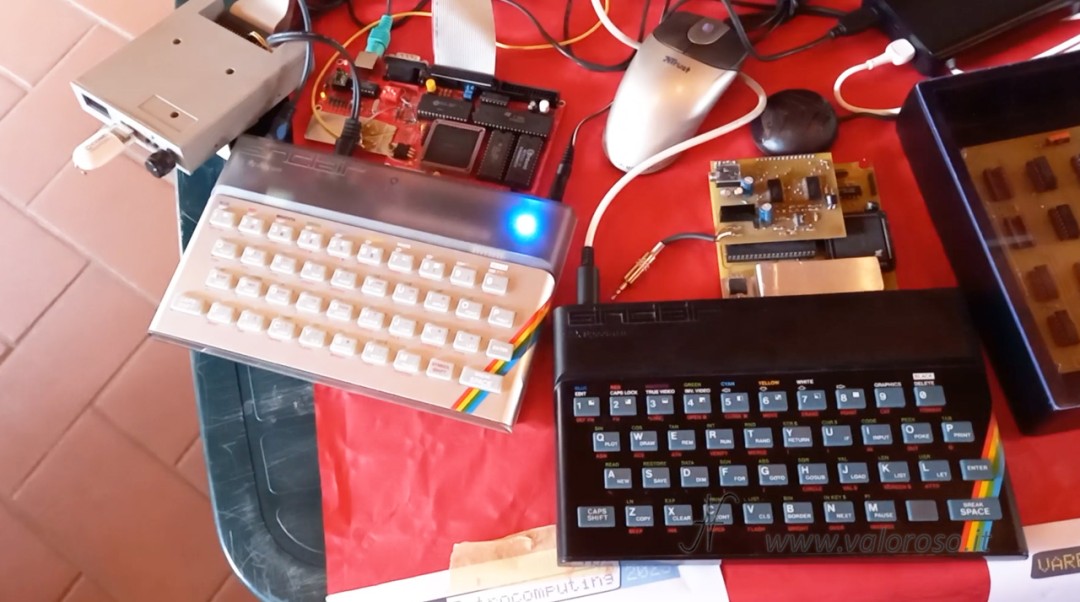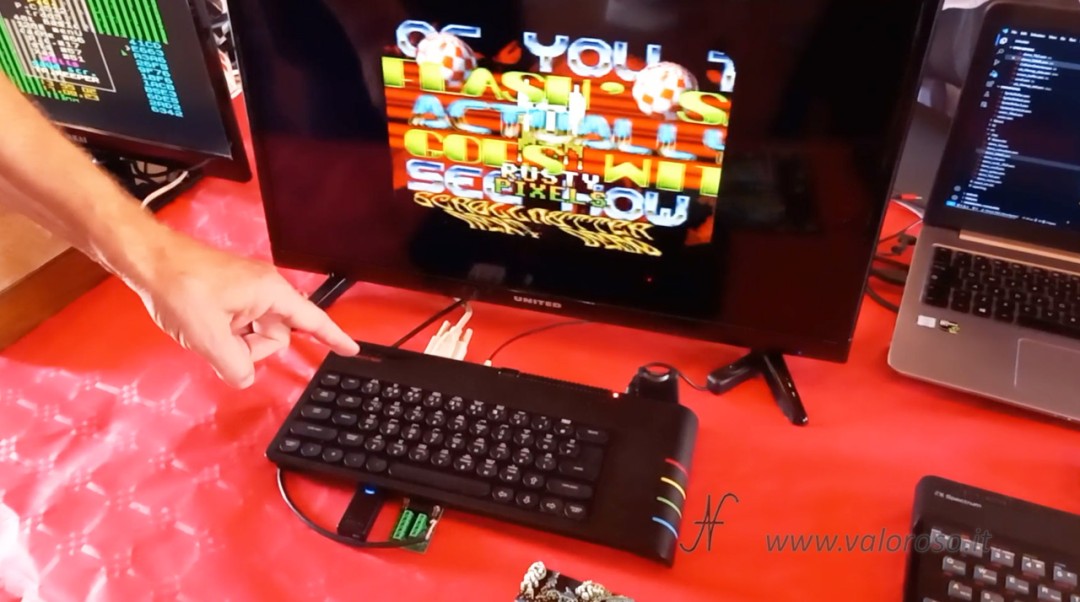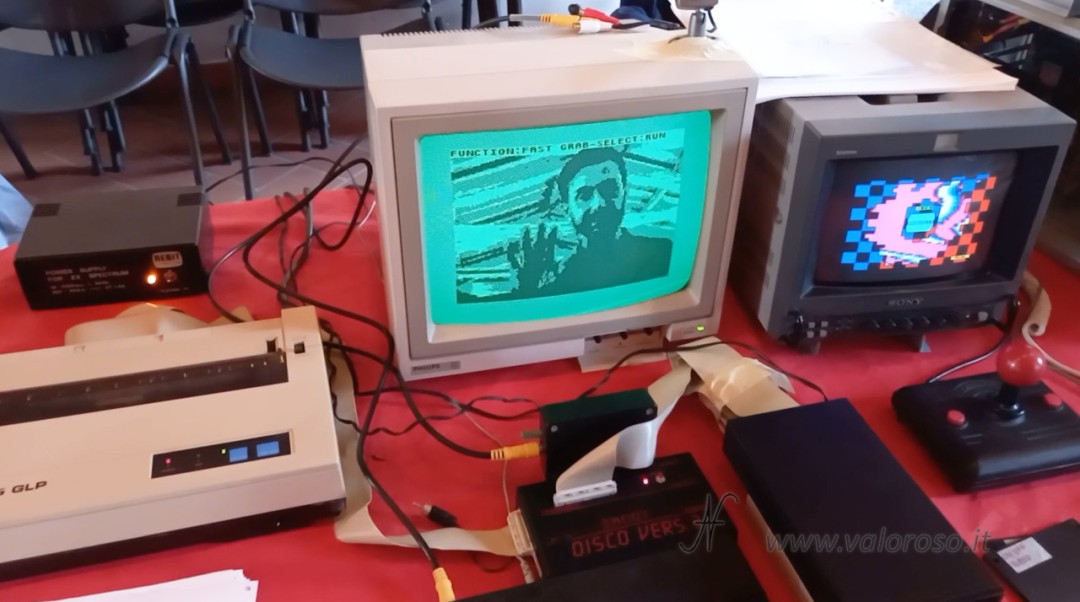Sinclair and ZX Spectrum, two names that resonate with nostalgia in the hearts of 80s retrocomputer enthusiasts. In this video, I had the honor of interviewing Mario Prato, Eugenio Ciceri and Davide Barlotti. You have no idea how many times I have watched this interview, full of passion and information!

This adventure into the past has been led by three industry experts: Mario Prato, Eugenio Ciceri, and Davide Barlotti, each of whom has contributed to reviving the fascination of Sinclair and the ZX Spectrum in particular.

Mario Prato – the ZX Spectrum clones
Mario Prato began the presentation, introducing some clones of the ZX Spectrum. In particular, he highlighted the Chrome 3, an advanced clone of the classic ZX Spectrum. But what makes Chrome 3 so special? It is an “Italian” clone that has taken a step forward in the modern world.
The Chrome 3 retains the charm of the original ZX Spectrum but has been beefed up with modern components. It has a faster CPU and more memory than the original model. But the news doesn't end there. The Chrome 3 is equipped with a sound card that allows you to listen to sampled music. In addition, Mario features interfaces for connecting floppy disks to the Spectrum, harking back to the era of vintage computers.

But the journey doesn't stop there. Mario Prato shared an exciting personal creation: a Russian-derived clone, made with modern logic. This experiment was born during the lockdown period, when Mario decided to get his hands on components available at home, just like the Russians did in past years. This clone, with 512KB of RAM, offers advanced features such as a real-time clock, an overclocked CPU, and a mouse.
Eugenio Ciceri – the journey through the history of the Sinclair ZX Spectrum
Then it's time for Eugenio Ciceri, an expert who guided us through the history of the ZX Spectrum. The Spectrum was the starting point for many enthusiasts, with its initial ZX81, a black-and-white model with just 1KB of RAM. Despite its limitations, it was coveted by nerds and enthusiasts of the time.

Later versions of the Sinclair computer, such as the ZX Spectrum, broke new ground for users, with the ability to expand the RAM up to 48KB. The ZX Spectrum was a computer for geeks, an exciting challenge for aspiring programmers. However, the Spectrum had its limitations compared to its competitors, such as the Commodore 64. It lacked a dedicated graphics chip and a dedicated sound chip, which meant that developers had to make the most of the available resources, creating creative solutions to achieve advanced graphical effects.
The infamous "color clash" has become a distinctive feature of the Spectrum, loved by users but often also hated! In practice, the color of the moving object on the monitor took on the color of the background. The sound also had its challenges, with a single-bit system and a small speaker. Despite these limitations, the developers have demonstrated their ability to create multi-tonal sounds, defying the absence of a dedicated audio chip.
But the Spectrum didn't stop at its origins. Eugenio Ciceri showed us the Spectrum 128K, which had 128KB of RAM, and also introduced the “double buffer” for smoother graphic animations. And then came the ZX Spectrum Next, an evolution that brought this 8-bit into the third millennium. This powerful machine, designed by enthusiasts in modern times, offers 256-color graphics and a host of new features that make it look more like a '90s Amiga than an '80s computer.

What do the computers presented by Eugenio Ciceri have in common? They were all designed by Rick Dickinson, a late industrial designer who was particularly skilled in computer engineering.
An Exciting Experiment with the Sinclair ZX Spectrum
Davide Barlotti concluded the presentation with an interesting experiment. He demonstrated how it is possible to use components found in the 1980s to capture images and print them in black and white.
Using a camera and a monochrome video capture card, Davide captured an image (my image!), showed it on a ZX Spectrum 48K and saved it on a floppy disk.
The highlight, however, was the "copy on paper", i.e. the printing of the image with an old Centronix dot matrix printer. The distinctive sound of the needle hitting the paper became an almost ASMR experience, reminiscent of the days when even printing an image took time and patience.

Are you interested in these topics?
If you want to find out more about the world of retro computers and vintage electronics, be sure to subscribe to @ValorosoIT channels. I'm on YouTube, Instagram, TikTok, Facebook... in short, on all social networks.